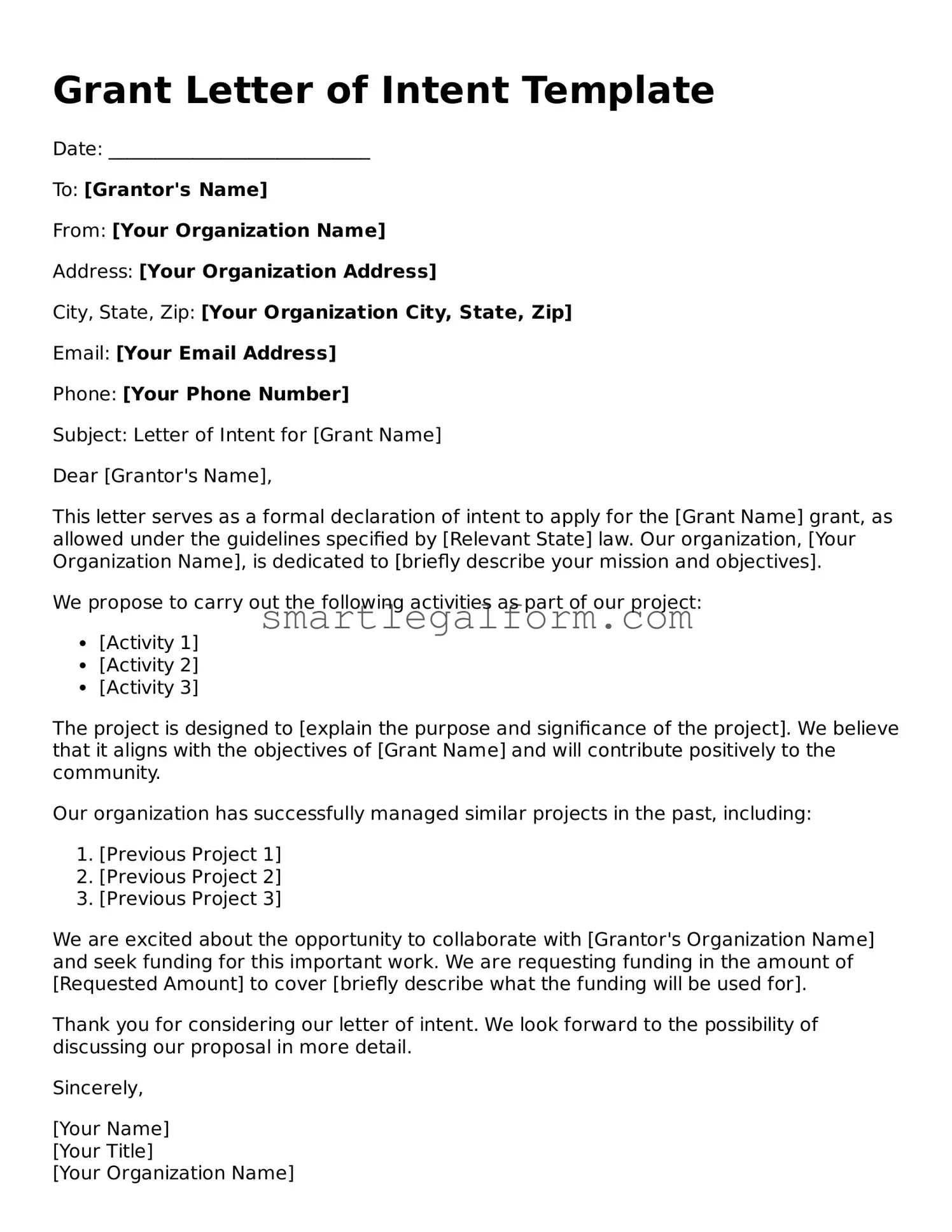Grant Letter of Intent Template
Date: ____________________________
To: [Grantor's Name]
From: [Your Organization Name]
Address: [Your Organization Address]
City, State, Zip: [Your Organization City, State, Zip]
Email: [Your Email Address]
Phone: [Your Phone Number]
Subject: Letter of Intent for [Grant Name]
Dear [Grantor's Name],
This letter serves as a formal declaration of intent to apply for the [Grant Name] grant, as allowed under the guidelines specified by [Relevant State] law. Our organization, [Your Organization Name], is dedicated to [briefly describe your mission and objectives].
We propose to carry out the following activities as part of our project:
- [Activity 1]
- [Activity 2]
- [Activity 3]
The project is designed to [explain the purpose and significance of the project]. We believe that it aligns with the objectives of [Grant Name] and will contribute positively to the community.
Our organization has successfully managed similar projects in the past, including:
- [Previous Project 1]
- [Previous Project 2]
- [Previous Project 3]
We are excited about the opportunity to collaborate with [Grantor's Organization Name] and seek funding for this important work. We are requesting funding in the amount of [Requested Amount] to cover [briefly describe what the funding will be used for].
Thank you for considering our letter of intent. We look forward to the possibility of discussing our proposal in more detail.
Sincerely,
[Your Name]
[Your Title]
[Your Organization Name]
